How to Feel Competent by Dumping a Lot of Stuff in a Bowl
by L.V. Anderson
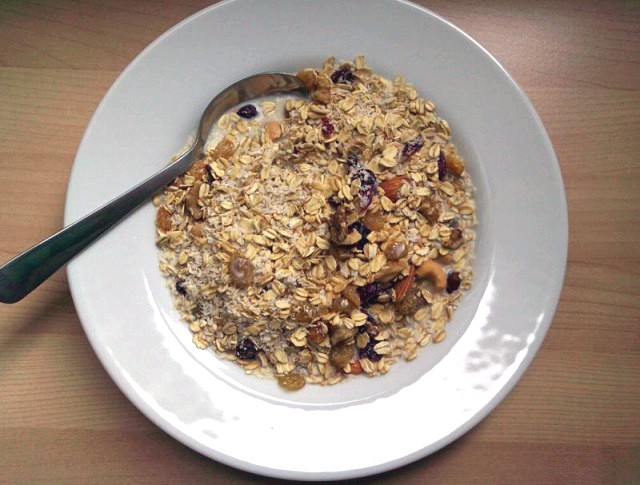
Do you, too, feel lazy, stupid, talentless, unproductive, boring, and generally like a failed grown-up? I mean, this is totally normal, right? Feeling grossly inadequate is a typical part of the human condition, as I understand it. Nonetheless, it’s nice to take an occasional break from self-loathing, and you can’t drink all day long, but there is one other thing I know how to do that makes me feel briefly like the most competent woman on earth: make muesli.
Muesli, as you’ll know if hitting “Random article” on Wikipedia has ever taken you to the page for Maximilian Bircher-Benner, is a breakfast cereal that was invented by a crazy Swiss dude about a century ago. It is basically uncooked rolled oats with other healthy and delicious things in it.
When I was younger and even stupider than I feel most of the time these days, I would buy boxed muesli at the grocery store, but eventually I realized that it tasted terrible. I first encountered a recipe for homemade muesli in Nigella Lawson’s wonderful cookbook Feast, in which Lawson writes, “There is something about muesli, real muesli, that makes me feel I am some intellectual, beautiful free spirit, throwing pots and writing poetry or political diatribes in 1960s Hampstead. And it’s a feeling I quite like.”
This quotation is quite seriously the closest thing I’ve ever had to a personal mantra (which maybe explains some things), and it pretty much sums it up: Making and eating muesli distracts you from your problems and makes you feel like a better person than you’ll ever be.
What took me years to figure out is that you do not actually need a recipe to make muesli. You just need a biggish bowl and a bunch of stuff to put in it. Here we go:
1) Dump a container of rolled oats (not instant, not quick cooking, and definitely not steel cut) into a bowl. You can use Quaker oats if they’re all you can find, but Quaker oats are, like my intellect, thin, ragged around the edges, and generally kind of sawdusty. I recommend using some of that fancy natural shit — Bob’s Red Mill makes some pretty good oats, in my experience, as does Old Wessex Ltd.
2) Add some shredded coconut, preferably unsweetened. (Bob’s Red Mill makes some pretty decent coconut, too. How do you do it, Bob? What do you know that we don’t?)
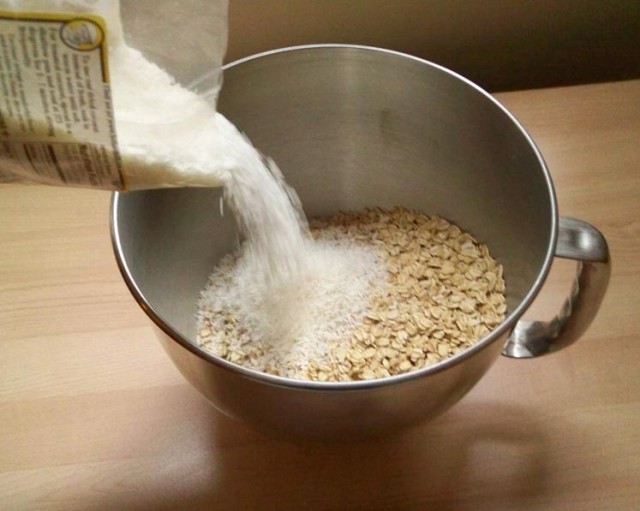
How much coconut should I add, you ask. Well, do you like coconut? Add a mountain. Do you loathe the taste of coconut? Add zero coconut. Are you ambivalent about coconut (as I am about so many things)? Add a cup or so, but just eyeball it; there’s no need to break out the measuring cups. (Let’s not go crazy here.) If you’re not sure how much to add, err on the conservative side; you can always add more later if you want to, but you can’t add less.
3) Add some nuts. I like walnuts, almonds, and cashews; they tend to be readily available, even at terrible grocery stores, and not insanely expensive. You can use whatever you want, depending on your taste and budget: macadamia nuts, peanuts, pistachios, pine nuts, pecans. You might want to chop them up a little before you add them, but I never bother, because I kind of like the feeling of having whole nuts in my mouth. (That’s what she … no, I’m sorry. I’m sorry. I can’t.)
Do you like seeds? Because seeds are also an option, my friend.
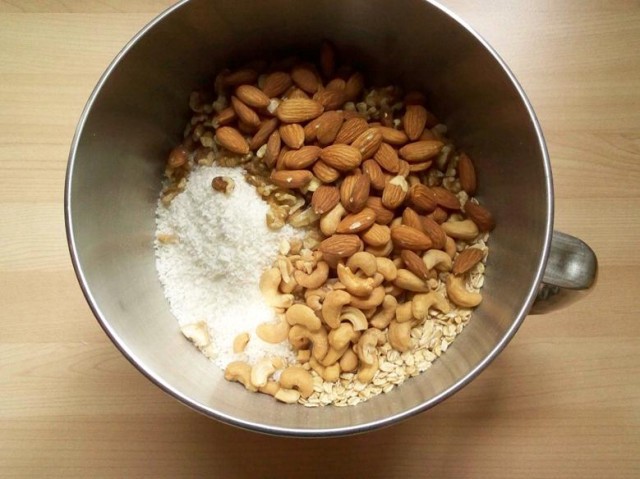
4) Add some dried fruit. Raisins are nice and, again, easy to find even at the World’s Worst Grocery Stores. I also enjoy dried cranberries, which are apparently called not dried cranberries but Craisins. (“Dried cranberries,” I suppose, does not sound sexy enough. Either that or the Ocean Spray marketing people thought people wouldn’t know what dried cranberries were unless they compared them to another more mainstream dried fruit. I’m not sure which is worse, actually.)
Dried cherries and blueberries can be expensive and hard to find, but they taste quite pleasant. With most other things — figs, dates, pears, apples, apricots — you’ll have to chop them up a little bit before you add them. For me, this is a deterrent to using them, but if you’re industrious, go for it.
5) Add some salt. Salt is what makes everything taste good. You know how pharmaceutical commercials always depict the world of depressed people as being in black and white and slow motion? That’s the way food tastes without salt: colorless and inert. Food without salt is as unthinkable as life without alcohol. So please add a good pinch or two of salt here. Your muesli won’t taste salty; it’ll just taste like muesli.
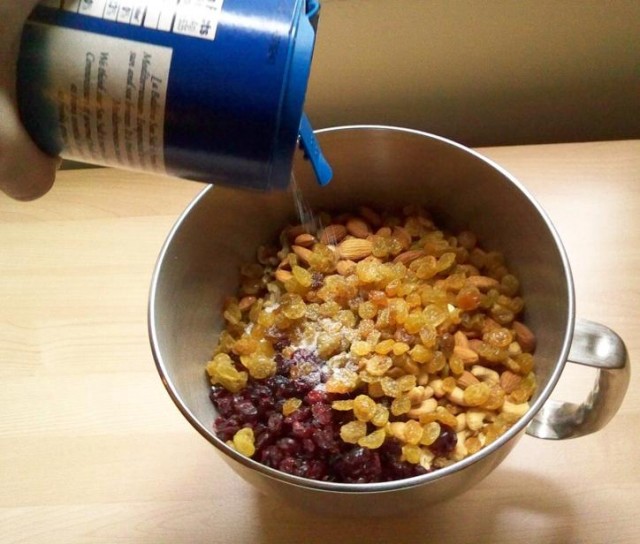
6) Stir.
7) Look at your muesli. Are you happy with its appearance? Does it look like it has enough coconut, nuts, dried fruit? Add more of anything you want until the ratio of ingredients pleases you.
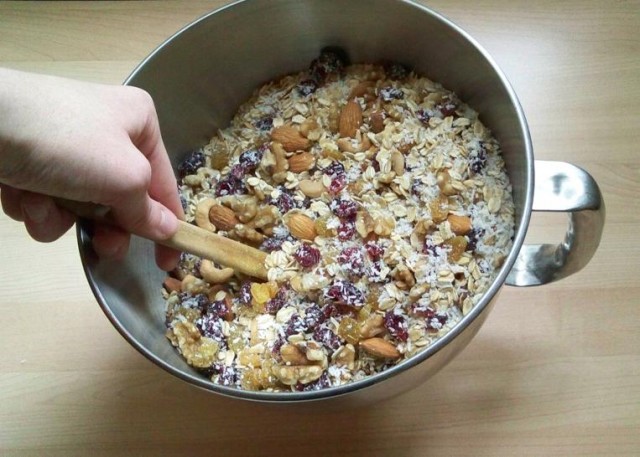
8) Put some in a smaller bowl, add milk or yogurt (or homemade soymilk, if you actually are competent), and eat it, quietly, alone in bed. (That’s where normal people eat, right?) Put the rest in a jar or Tupperware or some other receptacle and store it at room temperature. You’ll have enough to last for at least a week, unless you eat muesli for every meal, which, hey, there are many worse things.
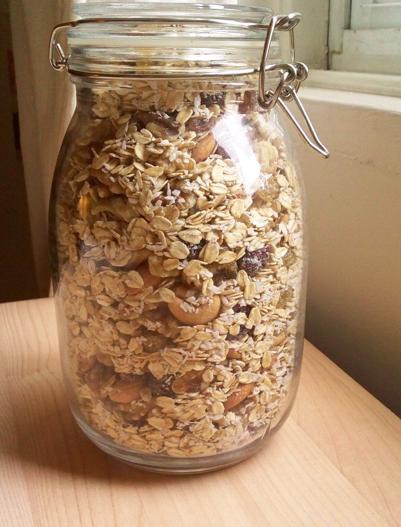
How do you feel now? Healthy? Competent? Capable of taking concrete actions to improve your life? Good. The feeling lasts only as long as it takes to eat a bowl of muesli, in my experience. But do your best to enjoy it while you can.
Previously: How to Write an Article About Older Women With Eating Disorders for the New York Times.
L.V. Anderson lives in Brooklyn.